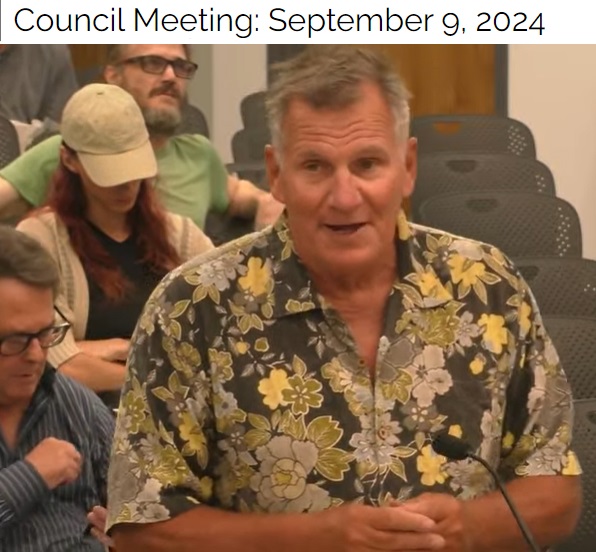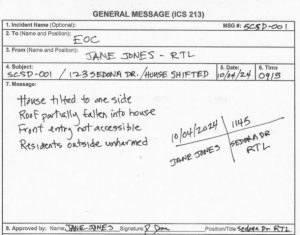Warning signs upriver from Millrace dam would save lives, money
4 min read
The drowning machine known as the Millrace dam is a threat to anyone floating the river who doesn’t know it’s there. At the City Council Sept. 9:
Mike McFarlane: I’m Mike McFarlane, for the record. The Millrace dam is in the middle of the Willamette River. It’s on the border of Springfield and Eugene. The dam was constructed to push water from the Willamette River to the Millrace canal, which eventually produced electricity for Eugene’s sawmills.
[00:00:33] It should be noted that low head dams kill about 50 people a year in the United States. Our dam has killed several people over the last 100 years it’s been there. That’s why it’s earned the nickname ‘drowning machine.’
[00:00:50] My reason for testifying today is to ask the City Council to be a full participant in the current effort to remove this hazard. Looking past the loss of life, there are other reasons for concern. The area around this dam has consistently required a disproportionate amount of resources from Eugene Fire Department Water Rescue Division.
[00:01:15] The dam has averaged two rescues a week in July of this year, and each rescue requires a hook and ladder, paramedic unit, and one jet boat. It’s a lot of money for the city of Eugene.
[00:01:29] A great question is why it’s still there today: It’s located in a jurisdictional black hole. It sits in the middle of the river, which is federal water, there’s rock formations on each side, which are state, the whole river trail…the list goes on, and it’s long. There are so many players in this game that it’s very, very difficult to get action.
[00:01:53] Under the leadership of (Sen.) Floyd Prozanski, a coalition has worked very hard to get these jurisdictions all in one room.
[00:02:00] Frank Harper: My name is Frank Harper. I’m also here to talk about the Millrace low head dam. and maybe in the next two minutes and 17 seconds, hold your breath. Because if you get caught in the Millrace dam while tubing down the river, you’re going to need to hold your breath.
[00:02:16] As you can see from my hat, I’m a Vietnam veteran, and being in the war you expect danger, you expect the possibility of losing your life. So two years ago, my son and I—he was 36 at the time—we decided to float down the river. We knew of the hazards of trees. But we did not know about the low head dam.
[00:02:38] We were coming towards the I-5 bridge and, surprising to us, we hit the low head dam. My son popped out, I popped out. I was caught in it. We both had life vests. We deployed them. And I was slamming back and forth, back and forth, and my son popped out, he deploys his vest, and I was definitely afraid that he was going to try to rescue me.
[00:03:02] So if there’s anything you can do, work with Mike McFarlane, try to find some way to get rid of that low head dam. There’s so many students that don’t know about it, and it’s so dangerous.
[00:03:14] And it was two weeks later, I watched a rescue, and believe me, it is scary for the fire department. It’s extremely expensive for them to put their lives in danger trying to rescue people who most likely don’t have life vests on.
[00:03:29] We had life vests. So, I’m submitting pictures here that hopefully you will take a close look at it, and if you get on the river, please be safe, wear your life vest, and watch out for the low head dam, and stay right, and maybe put up signs around the areas that say ‘Stay Right,’ because if you don’t do that, you’ll get caught and possibly lose your life and people have at that particular site.
[00:03:58] Councilor Alan Zelenka: As a river user for many years, fortunately I haven’t had any real close calls, but I do have a tremendous amount of respect for the power of rivers and how dangerous they can be. And I always wear my life jacket when I’m in a kayak or canoe, raft.
[00:04:13] I think it’s a really good idea to try to get rid of that dam. I know that’s probably a long-term thing and probably requires some federal appropriation or state appropriation.
[00:04:25] But in the meanwhile, I think helping fund some warning signs that are upriver from that that tell people to go river right to avoid this, maybe two signs or maybe three as a triangle to get people’s attention so they don’t inadvertently go over that.
[00:04:44] Like the gentleman said, he didn’t know it was there. When I’ve had semi-close calls, it’s because I didn’t know it was there. So warning people would be a good idea. That’s a pretty inexpensive interim fix, I would think.
[00:04:56] John Q: Mike McFarlane and Frank Harper suggest warning signs as an inexpensive way to save money and save lives.



